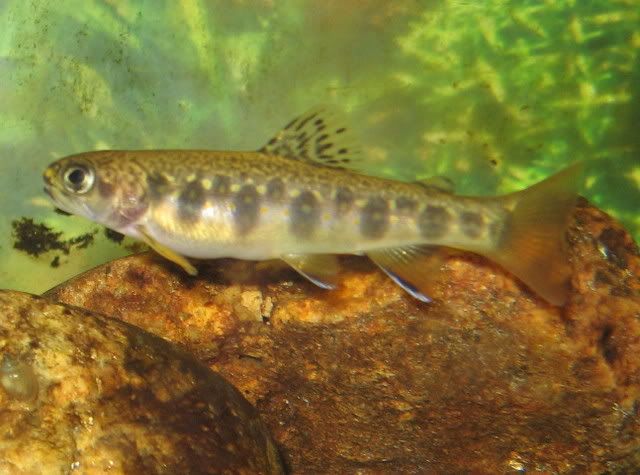 brook_trout.jpg 37.33KB
4 downloads
brook_trout.jpg 37.33KB
4 downloads brook_trout_small.jpg 29.18KB
2 downloads
brook_trout_small.jpg 29.18KB
2 downloads
Posted 11 November 2007 - 01:10 PM
 brook_trout.jpg 37.33KB
4 downloads
brook_trout.jpg 37.33KB
4 downloads brook_trout_small.jpg 29.18KB
2 downloads
brook_trout_small.jpg 29.18KB
2 downloads
Posted 11 November 2007 - 01:21 PM
Posted 11 November 2007 - 01:44 PM
Those are the prettiest/coolest trout species there is. They should stock these instead of the rainbow, brown, and lake trout.
Posted 11 November 2007 - 08:43 PM
Those are the prettiest/coolest trout species there is. They should stock these instead of the rainbow, brown, and lake trout.

Posted 12 November 2007 - 12:05 PM
Don't say that to someone from the Rocky mountains! Brookies are not native in the west but have been stocked widely. They became established in some high elevation streams where they over populated and out competed the native golden trout. Some states have poisoned the streams to try and eradicate the brookies.
Here on the east coast we just wish we had some streams that're overpopulated with brookies.
They sure are pretty!
Posted 12 November 2007 - 01:51 PM
Oh yeah, I definitely agree. Being a native Californian, I will say that Brooks are great to see out here in Virginia, but if ever I found a wild, undisturbed mountain stream in the Sierra Nevada, I would be hoping to see Goldens instead.
Posted 12 November 2007 - 02:00 PM
I will try to get some pics of the habitat - this size of the rifles these 6'-10" come out of is surprising....Funny thing was the big one came out of a riffle the size of a shoebox and the 2 little ones i caught came out of a 6' across pool - maybe 10" deep...
The coolest thing about these are - notice the insides of their mouths are black and how vivid red their their fins are with the contrast of the black and white edges...
Posted 13 November 2007 - 08:40 AM
yeah this is about full grown for this creek...i have caught some a little bigger. But there is obviously a fairly sizable breeding population here because every late sprin/eraly summer there are fingerlings everywhere you look, but by this time of year the ones that have survived are much more elusive, usually you don't even know they are there until they show up in your net...The cool thing is, those fish have adapted to the size of their environment. The one in the first pic looks like a sexually mature male coming into breeding coloration. I've also noticed in the past that the miniture adults retain their parr markings into adulthood. Those are the large oval shaped blotches on their sides that most salmonoids have as youngsters.
0 members, 1 guests, 0 anonymous users